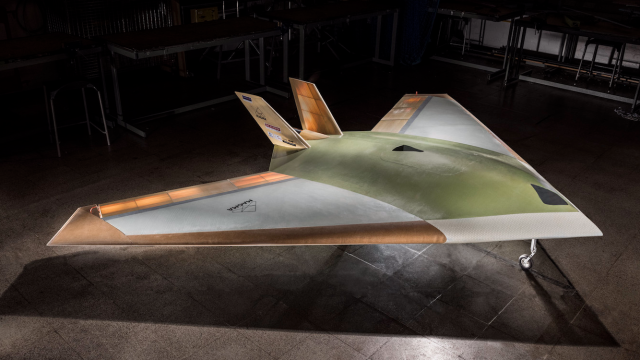No one’s invented cloaking devices yet, so aerospace companies have to use more conventional technologies to make stealthier jets and drones. Or, you know, you could remove some technology, like BAE has with its MAGMA drone, which uses blasts of air instead of traditional flight machinery to manoeuvre.
A joint venture with The University of Manchester, the MAGMA drone utilises a “unique blown-air system” to get around.
Right now, it consists of two major elements: Wing Circulation Control and Fluidic Thrust Vectoring:
- Wing Circulation Control, which takes air from the aircraft engine and blows it supersonically through the trailing edge of the wing to provide control for the aircraft
- Fluidic Thrust Vectoring, which uses blown air to deflect the exhaust, allowing for the direction of the aircraft to be changed.
Not only do they sound cool, they allow aircraft to do away with complicated moving parts, leading to “lighter, stealthier, faster” vehicles.
According to BAE, it’s completed the “first phase” of trial flights, with the hope being if all go well — to the point they can fly the drone “without any moving control surfaces or fins” — things can be put in motion to implement the technology in other aircraft.
MAGMA is by no means BAE’s first stealth drone, with the company performing trials of its supersonic Taranis UAV in Australia a few years back. I wonder if MAGMA will do the rounds down here too?
[BAE Systems, via Business Cloud]
